Spring has officially sprung, which means hours playing outside with the kids, getting your hands dirty, and inevitably playing in the sandbox. There’s nothing more fun for kids than grabbing a shovel and a bucket and digging in the sand to their heart content. Finding the best sandbox sand that is free of harmful toxins is so important.
Playing in the sandbox is more than a fun summer pastime, though. While playing in the sandbox, children are improving motor skills through shaping and molding sand. They’re also working on their hand-eye coordination. Plus, they’re using their creativity, gaining confidence, and learning cause and effect.
These are essential skills for your children, and while kids enjoy exploring the possibilities of their sandbox, it’s crucial to ensure they’re using safe sandbox sand.
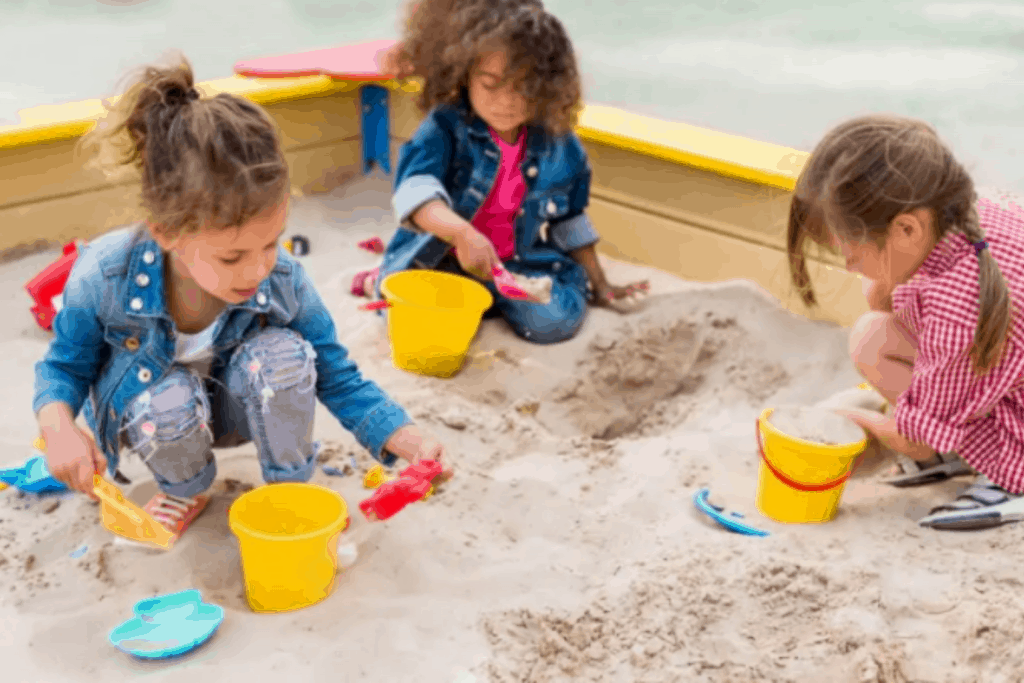
This post may contain affiliate links. Please see my full disclosure policy for details.
Quick Navigation
Concerns With Sandbox Sand
There are several concerns regarding sandbox sand, and most of them revolve around harmful toxins that can negatively impact your child’s health.
Most store-bought sandbox sand is very dusty, and kids love to get face level which results in breathing in that dust. We expect our kids to come out of the sandbox pretty dirty, but the dust from store-bought sand can contain toxins (like microcrystalline silica).
While your kiddos are having a blast in the sand, they can also ingest those toxins into their lungs just by breathing.
Store-bought sand also contains tremolite, which can have long-term adverse effects if your children, as well. These harmful substances are the reason for the California Proposition 65 label on most store-bought sandbox sand.
Another concern, is with these types of man-made sand (that come from a rock quarry or mine) is the shape of the actual sand particles. Since they are man-made they are jagged which causes more concerns when inhaled.
Toxins
Microcrystalline Silica
Microcrystalline Silica is made from quartz rocks. Silica is considered a carcinogen and can cause an array of health issues when breathed into the lungs. The main concern with silica in the respiratory system is an incurable disease known as silicosis.
Silica can also cause lung cancer, pulmonary tuberculosis, autoimmune disorders, and renal disease, to name a few. Almost all traditional sandbox sand found in stores contains silica, which is very dusty.
If you notice a cloud of dust coming from a public sandbox or your own, that’s a sign it could contains toxins that could enter the body.
Tremolite
Tremolite comes from crushed marble and limestone. Tremolite contains tiny fibers that can easily be inhaled while playing in the sandbox.
Long-term exposure to tremolite can cause the same health issues as asbestos exposure. Those health issues include mesothelioma, a type of respiratory cancer that can show symptoms up to fifty years after exposure. Tremolite can also cause serious health complications in the throat and GI tract.
Like silica, tremolite enters the body through the dust in the air. Dust in sandbox sand is a key indicator it isn’t safe for your family.
CA Proposition 65
Keep an eye out for sandbox sand labeled with California proposition 65. If the sandbox sand has this label, it contains cancer-causing agents. Sand with this label most likely contains silica and tremolite and is not safe for playsand.
You might also find labeling that says Not Labeled for Sale in California. This means is banned from being sold and distributed in California due to the toxins in the sand.
If you’re unsure if the sandbox sand you’re looking at is unsafe, ask the supplier for their SDS (Safety Data Sheet) report. If the report says “Not Labeled for Sale in California,” walk away!
What to Do if You Already Have a Sandbox and Can’t Replace the Sand
If you have already purchased a sandbox with unsafe sandbox sand, there are ways to minimize exposure to toxins. Most of the risk in toxic sandbox sand comes from dust kicked up during play.
You can reduce the amount of dust by wetting the sandbox sand before your kids play. You should also be careful when covering damp sand because mold can colonize the sandbox if left for too long.
It is important to keep your sandbox covered when it isn’t in use to prevent animals from using it as a restroom.
What to Look for in Non-Toxic, Safe Sandbox Sand
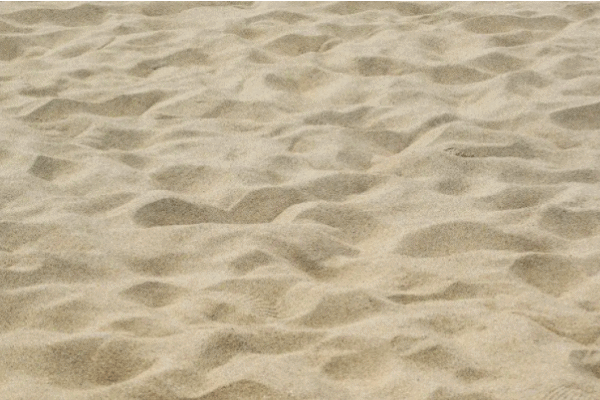
Thankfully, there are safe sandbox sand options on the market. There is non-toxic sandbox sand that doesn’t contain silica or tremolite. This sand is usually dust-free and natural vs your traditional man-made sand.
With natural sand, the sand particles naturally have smooth and rounded edges vs jagged. It is much worse for your lungs when you inhale a jagged particle of sand instead of a smooth, round particle.
Below you will find the safest, nontoxic sand for sandboxes.
Beach Sand
Beach sand is some of the best sand for sandboxes because it’s all-natural and contains less dust than traditional sandbox sand. When you go to the beach I’m sure you encounter many different types of sand. This beach sand is more in line with a tropical sunny vacation type of beach sand.
Beach sand contains natural mineral fragments along with tiny particles made of rocks and shells. Since beach sand is made up of natural particles, it is considered non-toxic sandbox sand and a much safer alternative than traditional sand.
Beach sand is usually very soft, smooth, and cooler to the touch than store bought sandbox sand.
Please know that it is illegal to go to a beach and take sand. You need to source beach sand properly, see the recommendations below.
River Sand
Like beach sand, river sand is also some of the best sand for sandboxes because it’s produced by nature and doesn’t contain harmful particles like silica, limestone, quartz, or tremolite.
River sand is one of the best sands for sandboxes because of its natural origins! Although river sand is harder to come by than beach sand, it’s a great choice.
When you choose natural sand-like river or beach sand, your kiddos are okay to jump in and get dirty.
Recommendations for Safe Sandbox Sand
There are several safe sandbox sand suppliers you can trust to provide non-toxic sandbox sand for your family, and they’re listed below!
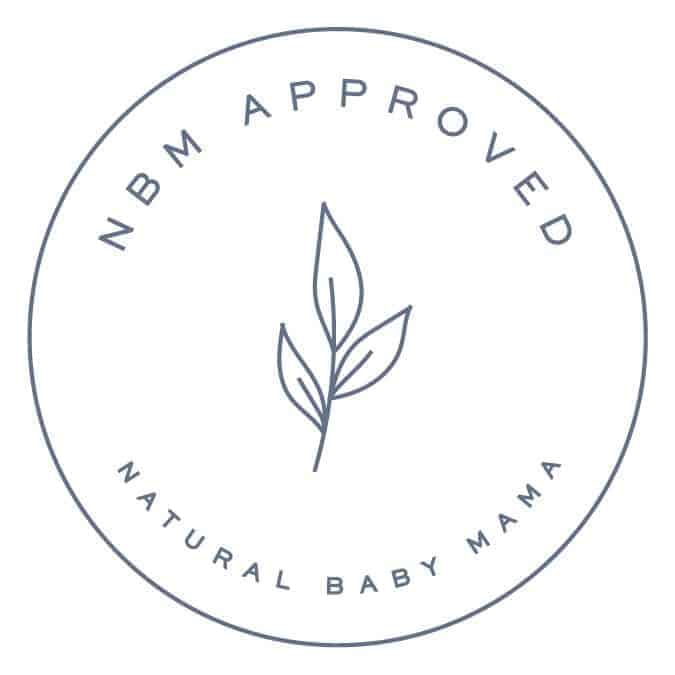
Sand Ranch
Sand Ranch sells Oregon beach sand from dunes. Dunes sand is the best sand for sandboxes because it comes straight from nature. We use this, and the sand is very soft, it contains no dust, and it’s very cool to the touch. My kids love this sand!
You can contact Sand Ranch directly or you can also purchase from Oregon Decorative Rock (which is where we purchased ours).
Shipping can be expensive so if you live in the PNW you are luck! Depending on how much sand you need it might be best to get a truck load of sand that you can buy by the yard from Oregon Decorative Rock.
Safesand.com
Safesand.com sells California beach sand sourced locally in California. This sand is some of the best sand for sandboxes because its all-natural with no toxins or bleaches used.
Safesand no longer lists the California beach sand on it’s website but they told me you can call and order it directly from them. Shipping seems to be more reasonable with Safesand.
Safesand also sells another type of sand as well that is man-made, I recommend their beach sand.
Locally Sourced River or Beach Sand
Calling around to local companies to source beach or river sand is also a great idea. Usually, local suppliers are more likely to source river sand, but I’ve found that it is still typically harder to come by.
A word of caution though, many times local supply companies will tell you that their sand is natural sand. They will tell you it is safe. You need to ask where it is sourced from. I had a local company tell me that their sand was natural river sand. I asked where they sourced it from and they told me it was a mine (so man-made) and not actually river sand.
You need to ask questions to ensure what you are buying is actually what they state it is.
Sandbox Sand Alternatives
If sand isn’t your style, there are several non-toxic alternatives to sand!
Pea Gravel
Pea gravel is a great sand alternative because it drains easily, preventing mold and other unsavory things from growing in your sandbox. Pea gravel contains no dust, and it sounds very similar to sand when poured. Overall, pea gravel is a great alternative. Just make sure you purchase pea gravel with rounded edges for your child’s safety.
Dried Rice
Dried rice is another all-natural alternative to traditional sandbox sand. Rice is toxin-free, contains no dust, and is small enough to imitate sand very well. Dried rice and other dried food alternatives are especially great for indoor sandboxes. If you use it in an outdoor sandbox, make sure to keep it well covered so that it stays dry and doesn’t attract animals!
Dried Beans
Dried beans are similar to dried rice. Dried beans are a natural choice for sandboxes and contain no harmful toxins. Again, dried beans would be an excellent choice for an indoor sandbox and must be kept dry and safe from roaming animals if used outside.
Flax Seed
Flaxseed is another natural alternative to sand. Like dried rice and beans, it’s excellent for indoor sandboxes. If you use it outdoors, it must be kept dry and covered to prevent molding and animal waste.
Tips for Keeping Your Sandbox Safe
There are several ways you can keep your sandbox safe. These tips will give you peace of mind while your little one plays.
- Rake out your sandboxes regularly to remove debris, rocks, or other harmful items when necessary
- Keep your sandbox dry to reduce moisture and mold growth
- Keep your sandbox covered to prevent animals from using it as a litter box. Animal feces can cause health risks like parasites and toxoplasmosis.
- Replace your sandbox substance periodically to ensure the sandbox stays sanitary
- Clean sandbox toys often
- Use untreated wood for the box itself
Recommended Sand Boxes
Like sandbox sand, not all sandboxes are created equal. You should avoid sandboxes made from railroad crossties because they contain creosote and other carsonegic substances which are very toxic. You do not want to expose your children to railroad ties. In addtion, it will also contanimate your soil.
The same can be said for sandboxes made from treated wood. Treated wood is also incredibly toxic due to the use of copper arsenate and arsenic. Once treated with these chemicals, wood can off-gas for years, leaving your kids at risk of adverse health effects.
The safest wood used for sandboxes is solid, untreated wood that you nail together in the corners.
We built our own sandbox with Douglas Fir, and it was very simple. If you don’t feel like DIYing your sandbox, make sure to look for non-treated solid wood when shopping!
Final Thoughts on Sandbox Sand
It’s important to do your research and read the labels before buying sandbox sand. Since most traditional sandbox sand contains toxins like silica, tremolite, limestone, and quartz – it isn’t safe for children. These toxins can lead to lung cancer, renal disease, upper respiratory problems, and a host of other negative health problems.
That’s why it’s important to look for safe sandbox sand like beach or river sand. Regardless of which non-toxic sandbox sand you choose, make sure to keep your sandbox clean and safe from roaming animals.
Along with safe sand, it equally important to choose non-toxic wood for the sandbox frame. Once you have your sandbox built and filled with safe sandbox sand you’ll child with have years of fun in their sandbox!
Check out the Natural Baby Mama Amazon Storefront for vetted non-toxic living products for the entire family!
Pin it for later!
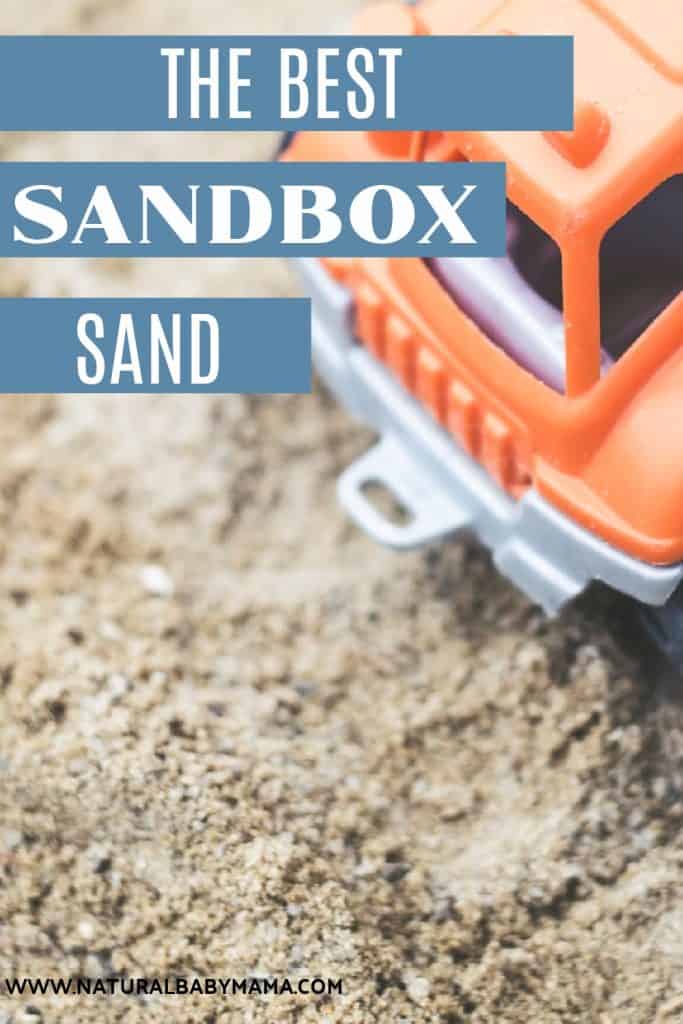
Other Posts Related to Non-Toxic Sandbox Sand
The Best Natural, Non-Toxic Sunblock
Sources:
Toxicological Profile for Silica-www.atsdr.cdc.gov
Keeping your Child Safe from Asbestos- www.healthychildren.org
https://www.osha.gov/Publications/osha3176.html (link says FILE NOT FOUND)
What is Proposition 65?- www.oehha.gov
Silica, Crystalline- www.cdc.gov
Play Sand Safe and Non-Toxic- www.healthychild.com
Pressure Treated Wood- www.impactlaw.com

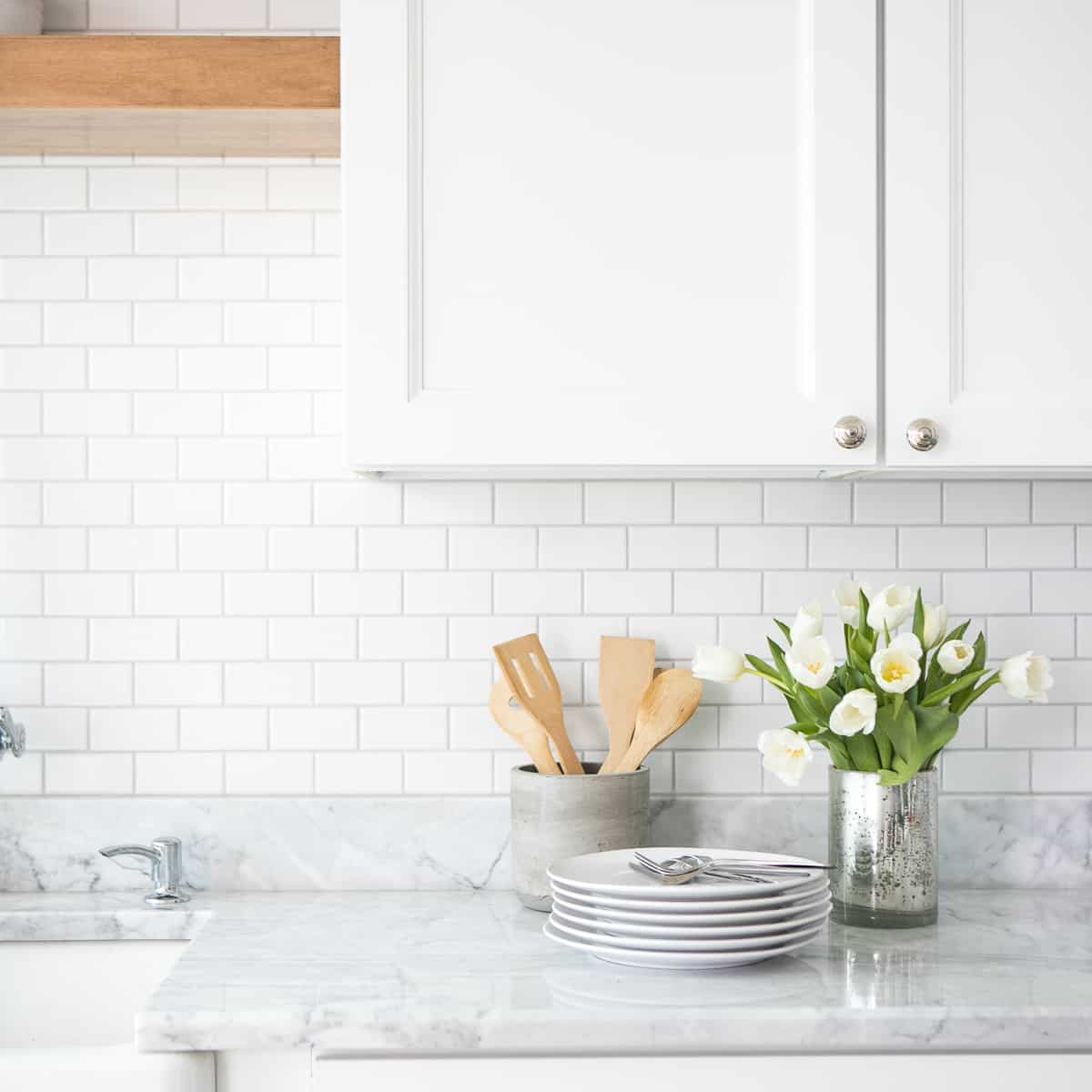

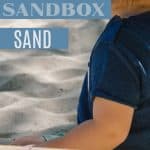
We go the our local park playground and our daughter loves to play with the sand there, as well as our local beach. From this article you are saying the beach sand is safe, what are your thoughts on the sand at local parks (not in sandbox, just sand on ground of park)
Beach sand is safe. Local park sand, it depends on how/where they source it. I don’t worry so much about local parks because I am not there frequently. If I was, then I would try finding out where they sourced it. Most of the time it’s the stuff you don’t want though.
Do you happen to know anything about Jurassic Sands safety? We have been looking for riverbed sand and they are a supplier, but do state that their sand contains crystalline silica… As noted on their website:
“Yes, most of our sands (and most sands sold in home improvement and big box stores) have crystalline silica in them because they contain quartz sand grains (which is the common name for crystalline silica). These are the same quartz grains found on 99.9% of the ocean, lakes and stream beaches in the US. And no, none of our sands contain asbestos, tremolite or any other harmful materials. . . It is not the crystalline silica that is the concern of OHSA or the California Prop 65 legislation. It is the ‘respirable’ portion of that material – the tiniest of particles that can get deep into your lungs. These are generally created when sand is crushed or pulverized or used in sand-blasting operations. It is these processes that create the respirable dust of concern. Most of our Jurassic Sands come from US deserts (or mountain ranges) where Mother Nature makes our sands nearly perfectly pure and they aren’t crushed or pulverized.”
Is this type of sand safe even if it contains the silica? Or should we be looking for a different type of river sand?
This is man-made per their response. I personally would avoid and look for naturally occurring sand.
Can you help me understand river sand? I am looking into purchasing some from a company that says their sand naturally has silica in it, but that it is safe? Does river sand naturally have silica? Should we avoid companies that have it?
Yes, silica is naturally occurring. Naturally sand – beach or river sand will be less dusty. Also, in the natural form, it is rounded vs man made that has jagged particles (which are an issue in the lungs). The issue is dust and silica. Our beach sand has zero dust.